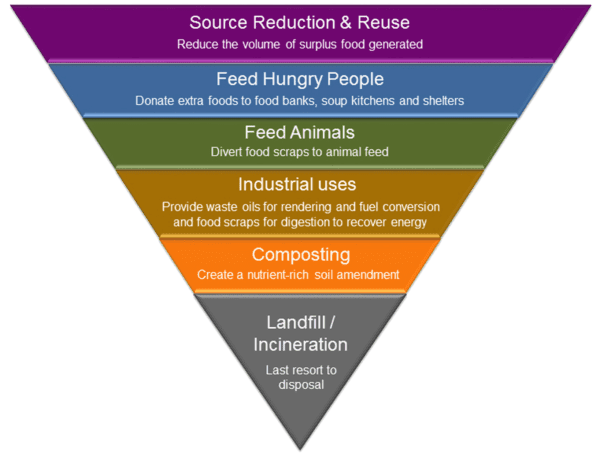
What Is Food Waste? We are always talking about waste, how to reduce it, how to recycle it, and how to stop it. And when we think about reducing waste, we think about plastic and other residues. But have you ever heard about Food Waste? If not, don’t worry it’s not that #trending. Lets go for it and check the Ultimate Guide about Food Waste and its Impact on the Environment
Is it food loss or food waste? The difference is based on the stage of the food chain in which it occurs. According to the FCRN (Food Climate Research Network), Food Loss is the decrease in edible food mass throughout the part of the supply chain that specifically leads to edible food for human consumption, so this happens during production, post-harvest, and processing stages- i.e. before it even gets to the store. On the other hand, Food Waste occurs in the final stage of the food chain, when the food is already at the store or in our homes.
Food waste is basically food that is not eaten. From that old bag of cookies you have deep in your pantry to a whole crop of soybeans that didn’t arrive at its destiny on time. It occurs in every step of the food system, which means it can happen during production, processing, distribution, retail, and consumption (you are here).

Most retail stores don’t sell “appealing” fruits and veggies. So if it ain’t pretty, it goes to the trash bin and never gets to the consumer’s hands. This may sound crazy, right? Just because an apple is bruised it can’t be sold. But this is not that uncommon, wasteful practices in the retail industry are viewed as a good business strategy. So most of the time when you check out the expiration date or the “sell by” date on a product it doesn’t mean it’s inedible, it just means it won’t satisfy the cosmetic expectation.
But let’s talk about you and me. According to the FAO (Food and Agriculture Organization)in the US, an average person wastes 238 pounds of food per year. Hard to believe, I know!
It is the highest percentage of waste in the whole food system. This not only damages the planet, but it’s also affecting your own pocket! Every average American wastes $1,800 per year on the food they don’t end up eating. That’s a lot of money you could be saving up – or getting some well-deserved vacation.
From a global perspective, food waste can amount to up to one-third of all food produced. To break it down for you: that is, for every 100 kg of food that is produced, 30 kg is wasted.
Approximately 50% of food waste happens at the consumer level. That means this happens in our homes. In the US, every other person wastes 21% of the food they buy!
According to the NRDC ( Natural Resources Defense Council) here’s the ranking of largest wastes on consumer-level:
Surplus food (food that is produced but never eaten) requires a big amount of resources. Basically, food goes through the entire process of growing, harvesting, transporting, cooling, cooking, or preparing just to be discarded. And we all know this is a big waste of energy. Plus it contributes to climate change.
The total volume of water used each year to produce food that is lost or wasted is 250km3 is equivalent to the annual flow of Russia’s Volga River, or three times the volume of Lake Geneva. Similarly, 1.4 billion hectares of land – 28 percent of the world’s agricultural area – is used annually to produce food that is lost or wasted. According to FAO, if food wastage were a country (talking about the Greenhouse emissions levels) it would be the third-largest emitting country in the world.
You may be thinking.. It’s just food, it’ll feed the ground!
Research shows that once food gets settled in landfills it decomposes without oxygen. This is a phenomenon scientists call anaerobic digestion, this creates methane gas. If you thought carbon dioxide was good at trapping heat, methane gas kicks its butt. It is 25 times more effective at trapping heat than CO2, resulting in warming up our planet.
To say it roughly, if not properly disposed of (composted), food waste is actually chipping in (very generously) to climate change.
But don’t get me wrong, composting is not the (only) solution. The key is in the three Rs system. Yup!!! Reduce, Reuse, Recycle.
These guidelines apply to any kind of waste so it works perfectly to approach the food waste problem. This is what the United States Environmental Protection Agency designed as the Food Recovery Hierarchy to help guide priorities to attack food waste:

Find out more about the 3Rs here: Reduce, Reuse and Recycle: What does it Mean, How to put it in Motion
As you can see, a big part of the problem is in how much food the industry is actually producing more than we can eat. And we can’t change that for now. But we can actually make some changes at home that will contribute to helping fight climate change.
Let’s face it – it’s not easy to live Zero Waste, heck it’s nearly impossible when our lives revolve around chores, work, school and actually having some kind of social life. So Zero Waste may not be your priority and that’s ok!
That said, there are easy ways you can contribute against climate change so here are some (realistic) tips and tricks to reduce the food waste in your home:
Fun tip! You can set up an “Eat soon” shelf or drawer and try to make recipes with ONLY the things you find there. (That’ll feed your belly and your imagination)
And last, but not at all, least:
We can lessen our contribution to climate change by simply rethinking how we shop and cook. So, let’s make a change in our households. How we shop sets the tone. Buy only what you need and each month review your shopping list to make sure you are not getting things you already have.
What if I tell you that you can have a Zero Food Waste Household? No, I´m not crazy, you can actually do it by following these simple steps:
Tackling Food Waste should not be hard, and it can be delicious! To learn more about how to start cutting down on food waste in your own life, check out our article on Food Waste 101: Simple Steps Towards a Zero Food Waste.